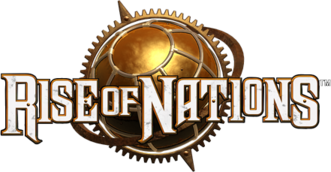| Age Overview | Units and Buildings | History |
The "Classical Age", also known as "Classical Antiquity", is a common academic term for an very wide time period, conventionally considered to begin around the time of the the earliest-recorded Epic Greek poetry of Homer (8th–7th century BCE); or alternately, and more specifically, to the first Olympiad (776 BCE), which marks the beginning of Greek recorded history. The most powerful and influential cultures and states of the dawn of the Ancient Age declined, particularly as a result of the Bronze Age collapse, a period of widespread destruction and decline in the Eastern Mediterranean. In turn this collapse allowed new peoples and states to rise to power over the ruins of the ancient ones, and with time, brought along with them important innovations in the fields of technology, science, learning, trade and warfare.
An enormous amount of memorable events took place during the early Classical age. Around this period, the replacement of iron over bronze as the primary material for tools and weapons became widespread in most regions of the world, a phenomenon popularly known as the "Iron Age". Famopus event include rise and fall of Assyria, the Persian expansion, the Graeco-Persian Wars, the Macedonian campaigns, the Punic Wars, the rise of Rome, the almost complete unification of India, the first Chinese empire under a single dynasty, and many more. This is also the era of many great monuments such as six of the "Seven Wonders of the World", the beginning of the Great Wall of China, the first Nubian and Mesoamerican pyramids, among others.
Many of the world's best known empires arose and developed during Classical age. In the Near East, leading the way was the Neo-Assyrian empire, the first to ever control the entire Fertile Crescent, followed by the Neo-Babylonian, Lydian, and lastly, the Medes, one of the Iranian peoples that came from the steppes to the north, and would reshape the region forever. The Achaemenid Persian empire followed them, then Hellenistic kingdoms, and nearing the end of the period, the region was divided in a tense standoff between the Roman empire and a revived Persian empire under the Arsacid and Sasanian dynasties.
Europe in this period was also to feel the expansion of Greek power from independent city-states to a world empire, after which the Romans where to similarly transistion from a small city-state to a large and powerful entity, absorbing most of the lands conquered by their Greek predecessors and becoming the greatest power Europe had ever seen, strongly built on Greek cultural foundations. The many Celtic peoples were to expand to most of Europe (and beyond) early in this period, and offered fierce resistance to Roman expansion. Similarly did the Dacian and Illyrian kingdoms, as well as the Germanic tribes, which famously managed to put Roman expansion in Europe to a definite halt.
Central Asia was in the domain of the Iranic Scythian tribes, which would occupy a region spanning from Eastern Europe to the Tarim Basin, and were to raid the Near East and even invade and occupy India later on. Around the end of the period, they were to be driven out and/or absorbed, first by the Sarmatians and Alans, then by Turkic and Slavic tribes at the end of the period.
India was still divided into the various Vedic kingdoms, but would have its first empire in this period; the Nanda empire, followed by the Mauryan Empire, which managed to unite allmost the entire subcontinent and is considered by many to be the first golden age of India.
In East Asia, the Chinese, like the Indians, were also to have a unified state for the first time: the Qin under Qin Shi Huang, followed by the Han dynasty and the Three kingdoms period. A Korean state also began to develop under the kingdom of Joseon, while in Japan, the Yamato period began.
Africa experienced the decline of Egypt, which passed from being one of the greatest powers of the ancient world to the vassal state of the many empires that followed. The ever-resistant Nubians to the south would maintain their independence and become a bastion of ancient Egyptian culture in the centuries to come. Also the Carthaginian empire was to form in North Africa, and oppose Rome for the title of the greatest power of the Mediterranean, while Eastern Africa had the flourishing of Ethiopia as a great power.
Mesoamerica had its first great urban centers when the Maya began to expand their villages into true cities with monumental architecture around the 8th century BCE, corresponding with the late Preclassic period of Maya civilization.
In South America, the Chavín culture was developing into a thriving civilization in the Pacific coast of Peru, and was to influence most cultures to come afterwards, both in the coast and the Andean range.
The ending stage of Classical antiquity is called "Late Antiquity", a period between the 3rd and 7th centuries AD, and overlaps considerably with the "Early Middle Ages". Late antiquity is known for decisive events such as the Migration period, the Hunnic expansion, the Roman-Persian Wars, or the rise of Christianity and Islam.
